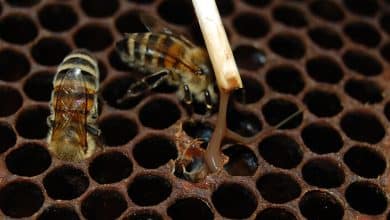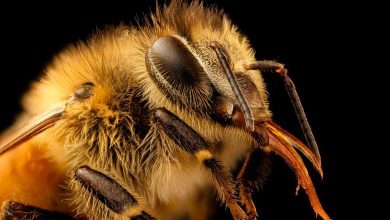How to Properly Treat a Bee Sting at Home

When a person gets Bee Sting, they may notice immediate pain and discomfort at the sting site. The area often becomes red, swollen, and itchy. A bee sting can sometimes leave behind a stinger attached to the skin. The stinger can vary in size and feel like a sharp prickle.
Apart from the physical symptoms, individuals may experience a burning sensation or sharp pain where the bee stung them. The site of the sting may also feel warm to the touch. It is essential to remember that bee stings can cause allergic reactions in some people, leading to more severe symptoms such as trouble breathing, dizziness, or swelling in areas further from the sting site.
Identifying a bee sting involves recognizing these typical signs and symptoms promptly to take appropriate action in treating the sting. If these indications are present after a potential bee encounter, it is crucial to act quickly to alleviate discomfort and avoid any complications that may arise.
Identifying the signs and symptoms of a bee sting
Symptoms of a bee sting include immediate pain, redness, and swelling at the sting site. The area may feel warm and itchy. Upon inspection, a stinger might be visible. If stung, one may experience a burning sensation and sharp pain. It’s crucial to recognize these signs promptly.
Common symptoms of a bee sting involve discomfort, inflammation, and itching. The presence of a stinger may aggravate the pain. Immediate reactions like redness and swelling often occur. Recognizing these typical signs is key to addressing the situation effectively. It’s important to be mindful of any allergic reactions, which can lead to more severe symptoms like dizziness or breathing difficulties. Knowing these signs can help in providing the necessary care promptly.
Reacting promptly to a bee sting
Upon noticing a bee sting, swift action is crucial. Immediately remove the stinger using a scraping motion, avoiding squeezing to prevent more venom entering. Clean the area with soap and water to reduce the risk of infection. Apply a cold compress or ice pack to alleviate pain and swelling. Avoid scratching to prevent irritation and further inflammation.
Monitor for signs of an allergic reaction, such as difficulty breathing or swelling beyond the sting area. If any severe symptoms like chest pain or dizziness occur, seek medical help promptly. Consider taking an antihistamine to manage itching and redness. Keep the affected area elevated to reduce swelling. Stay calm to prevent spreading venom throughout the body. Remember, reacting promptly to a bee sting can help minimize discomfort and potential complications.

Removing the Stinger
To safely remove the stinger, start by avoiding squeezing it to prevent more venom from entering the skin. Promptly get rid of the stinger using a scraping motion. This will help minimize the amount of venom released into the body. Use a piece of gauze, your fingernail, or even a credit card to carefully brush or scrape out the stinger.
It’s essential to act swiftly as a bee’s stinger can continue to release venom while stuck in the skin. Avoid attempting to remove a stinger located below the surface of the skin to prevent further irritation. Remember, only bees leave their stingers, so if you are stung by a different insect like a wasp, there may not be a stinger to remove. Removing the stinger promptly is a crucial step in managing a bee sting effectively.
Safely removing the Bee Sting
To safely remove the Bee Sting, it is crucial to act quickly. Using a scraping motion, carefully scrape the stinger out of the skin. Avoid squeezing the stinger, as this can release more venom into the body. The goal is to minimize the amount of venom entering the skin. One can use a piece of gauze, a fingernail, or a credit card to gently brush or scrape out the stinger.
It’s vital to ensure the stinger is removed promptly, as a bee’s stinger can continue to release venom while stuck in the skin. If the stinger is located below the surface of the skin, refrain from attempting to remove it to avoid further irritation. Remember, only bees leave their stingers, so if the sting is from a different insect like a wasp, there may not be a stinger to remove. Prompt and careful removal of the stinger is a critical step in managing a bee sting effectively.
Avoiding additional venom exposure
To avoid additional venom exposure, it is essential to act swiftly and cautiously. After removing the Bee Sting, refrain from squeezing the affected area, as this can lead to more venom entering the skin. Avoid scratching or rubbing the sting site, as this can cause the venom to spread and exacerbate the irritation. It’s crucial to resist the urge to apply any substances like alcohol, vinegar, or ammonia to the sting area, as they can further inflame the skin and increase discomfort.
Tight clothing around the sting site should also be avoided to prevent pressure on the area. Keeping the sting area clean and dry is vital to prevent any secondary infections. By taking these precautions, one can minimize the risk of additional venom exposure and promote faster healing of the bee sting.

Cleaning the Sting Area
After being stung by a bee, it is crucial to clean the affected area promptly. Begin by washing the sting area with soap and water to remove any dirt or bacteria that could lead to infection. Avoid the temptation to scratch the sting site, as this can introduce more germs and worsen the irritation. Research on honey Bee Sting removal emphasizes the importance of swift stinger removal to prevent further venom release.
Remember, a bee’s stinger will keep pumping venom as long as it remains in your skin. The recommended method for stinger removal is to gently brush or scrape it out using a piece of gauze, a fingernail, or even a credit card. By cleaning the sting area thoroughly and removing the stinger promptly, you can minimize the risk of complications and promote faster healing of the bee sting.
Cleaning the affected area of the bee sting
After being stung by a bee, cleaning the affected area is essential. Start by washing the sting site with soap and water. This helps to remove any dirt or bacteria that could cause infection. It is important to avoid scratching the sting area as it can worsen the irritation and increase the risk of infection. Research suggests that prompt removal of the stinger is crucial in preventing further venom release.
A bee’s stinger will keep pumping venom into the skin until it is removed. Therefore, it is recommended to gently brush or scrape out the stinger using a piece of gauze, a fingernail, or a credit card. Thoroughly cleaning the sting area and removing the stinger promptly can help minimize complications and promote faster healing of the bee sting.
Preventing infection after a bee sting
To prevent infection after a bee sting, it is crucial to clean the affected area thoroughly with soap and water. This helps remove dirt and bacteria. Avoid scratching the sting site as it can introduce germs. Promptly remove the stinger by gently scraping it out to stop further venom release. Apply an antiseptic or antibiotic ointment to the sting area to reduce the risk of infection.
Cover the sting with a clean bandage to protect it from irritants and contaminants. Keep the area clean and dry to promote healing. Check for signs of infection, such as increased redness, warmth, swelling, or pus, and seek medical attention if needed. Following these steps can help prevent infection and aid in the recovery process after a bee sting.

Soothing the Pain and Swelling
To ease the pain and swelling from a bee sting, applying a cold compress can help. Wrap ice in a cloth and gently place it on the sting area for about 10 to 20 minutes. This can reduce pain and inflammation. Aloe vera gel is another effective natural remedy for soothing bee stings. The cooling properties of aloe vera can alleviate discomfort and promote healing. Over-the-counter pain relievers like ibuprofen or acetaminophen may also be used to manage pain.
Elevating the affected area can help reduce swelling. Keeping the sting site elevated above the level of the heart can prevent fluid accumulation and lessen swelling. Additionally, applying a paste of baking soda and water or vinegar to the sting area may help neutralize the venom and alleviate symptoms. These simple remedies can provide relief and quicken the healing process after a bee sting.
Home remedies for relieving pain and swelling
Home remedies for relieving pain and swelling after a bee sting include applying a cold compress to the affected area. Ice wrapped in a cloth can help reduce pain and inflammation. Aloe vera gel, known for its soothing properties, can also alleviate discomfort from a bee sting. Elevating the sting site above the heart level can prevent excessive swelling.
A paste of baking soda and water or vinegar applied to the sting area may neutralize venom and provide relief. Over-the-counter pain relievers like ibuprofen or acetaminophen can help manage pain. Additionally, taking antihistamines can reduce itching and inflammation. Keeping the sting area clean and dry is essential to prevent infection. These simple home remedies can ease the discomfort of a bee sting and aid in a faster recovery.
Natural ways to reduce inflammation
Applying a cold compress can help reduce inflammation after a bee sting. Cold therapy constricts blood vessels, decreasing blood flow to the affected area and reducing swelling. Using a cold pack or a cloth wrapped around ice can provide relief. Aloe vera gel, known for its anti-inflammatory properties, can also help reduce swelling and redness. A thin layer of aloe vera gel applied to the bee sting area can soothe the skin and promote healing.
Elevating the sting site can aid in reducing inflammation. Keeping the affected area elevated above heart level can prevent fluid build-up and minimize swelling. Chamomile tea bags, when chilled and placed on the bee sting, can also alleviate inflammation. Chamomile contains anti-inflammatory compounds that can help soothe the skin. These natural remedies can be effective in reducing inflammation and promoting healing after a bee sting.

When to Seek Medical Help
If you experience symptoms of a severe allergic reaction after a bee sting, seeking medical help is crucial. Signs of a severe allergic reaction include difficulty breathing, swelling in the throat or tongue, rapid heartbeat, dizziness, and a drop in blood pressure. If you notice these symptoms, seek immediate medical assistance.
Additionally, if the area around the bee sting becomes increasingly red, swollen, and painful, it could indicate an infection. In such cases, medical attention may be necessary to prevent further complications.
Individuals with a history of severe allergic reactions to insect stings should always seek medical help after a bee sting, even if initial symptoms seem mild. It is important to take allergic reactions seriously and get prompt medical treatment to prevent a potentially life-threatening situation.
Remember, when in doubt about the severity of your reaction to a bee sting, it is always better to err on the side of caution and seek medical help.
Recognizing severe allergic reactions to a bee sting
Severe allergic reactions to Bee Sting can manifest in various ways. Swelling of the throat or tongue is a critical sign to watch for. Difficulty breathing, rapid heartbeat, lightheadedness, and a sudden drop in blood pressure are alarming symptoms. If any of these occur after a bee sting, seek immediate medical help.
Individuals with known severe allergies to Bee Sting should be especially vigilant. Even mild initial symptoms can escalate quickly. It’s crucial to recognize the signs of anaphylaxis, a severe allergic reaction that can be life-threatening.
Promptly responding to severe allergic reactions is vital. Call emergency services or visit the nearest emergency room if you or someone else experiences these severe symptoms. Delaying treatment can be dangerous. Healthcare providers may administer epinephrine to counteract the allergic response. Be proactive in recognizing and acting on severe allergic reactions to Bee Sting.
Knowing when to seek professional medical assistance
If the individual experiences severe symptoms like swelling in distant areas from the sting site, challenges breathing, dizziness, or a rapid heartbeat, quick medical attention is critical.
When allergic reactions extend beyond mild itchiness or swelling around the sting area, medical intervention is necessary.
Additionally, if a previous bee sting resulted in a severe allergic response, a healthcare provider’s evaluation is recommended.
Persistent pain, redness, or swelling at the sting site after a few days could indicate an infection, warranting medical assessment.
Professional medical help should be sought if the individual has a history of severe allergic reactions, such as anaphylaxis, to bee stings.
Monitoring the symptoms closely and promptly seeking medical assistance when necessary can prevent complications and ensure proper treatment for bee sting-related issues.

Prevention and Conclusion
To prevent Bee Sting, individuals should avoid wearing bright colors or floral patterns. They should refrain from using strongly scented perfumes, soaps, or lotions when outdoors. Be cautious around flowering plants and sweet beverages that attract bees. Keep food and drinks covered when dining outside.
Check for any bees before mowing the lawn or engaging in outdoor activities. Respect their space and avoid disturbing bees or their hives.
In conclusion, being aware of the signs and symptoms of Bee Sting and knowing how to properly treat them at home can alleviate discomfort and prevent complications. Promptly removing the stinger, cleaning the affected area, and soothing pain are key steps in managing Bee Sting.
Seeking medical help for severe allergic reactions or infections is crucial to ensure proper treatment. By following preventive measures and applying appropriate first aid techniques, individuals can effectively address Bee Sting and promote a safe outdoor experience. Remember, when in doubt, always seek professional medical advice.
Tips for preventing Bee Sting
When outdoors, individuals should avoid wearing bright colors or floral patterns that attract bees. It is advisable to refrain from using strongly scented perfumes, soaps, or lotions. Be cautious around flowering plants and sweet beverages that may lure bees. Remember to keep food and drinks covered when dining outside to prevent bee encounters.
Before mowing the lawn or engaging in outdoor activities, always check for bees to avoid accidental stings. Respect bees’ space and avoid disturbing their hives. By being mindful of these preventive measures, individuals can lower the risk of Bee Sting. It is important to stay calm and move away slowly if bees are in the vicinity. Understanding and respecting bees’ behavior can help prevent stings and promote safe outdoor experiences.
Concluding thoughts on treating Bee Sting at home
In concluding, it’s essential to remember that prompt and proper treatment of Bee Sting at home can help alleviate symptoms and prevent complications. By identifying Bee Sting early and reacting promptly, individuals can minimize discomfort and reduce the risk of infection.
Removing the stinger safely and cleaning the affected area thoroughly are crucial steps in the treatment process. Utilizing home remedies for pain relief and swelling reduction can offer natural alternatives to traditional medications.
While most Bee Sting can be managed effectively at home, it’s crucial to know when medical assistance is necessary, especially in the case of severe allergic reactions. Understanding the signs of a severe reaction and seeking professional help when needed can prevent serious complications.
Ultimately, prevention is key in avoiding Bee Sting altogether. By following simple tips to deter bees and being cautious in outdoor environments, individuals can reduce the likelihood of being stung. Remember, knowledge and preparedness are valuable tools in managing Bee Sting at home.
How do you heal a bee sting fast?
To heal a bee sting fast, one can start by removing the stinger promptly to prevent more venom delivery. After removing the stinger, clean the area with soap and water to prevent infection. Applying a cold compress or ice pack can help reduce pain and swelling. Over-the-counter antihistamines or pain relievers can also provide relief. Natural remedies like aloe vera gel or baking soda paste may help soothe the sting area. Avoid scratching or rubbing the affected area to prevent further irritation.
Keeping the sting site clean and dry is crucial for faster healing. Monitoring the sting for any signs of infection or allergic reaction is essential. If symptoms worsen or persist, seeking medical attention promptly is advisable. Remember, each person may respond differently to Bee Sting, so it’s essential to find what works best for individual healing.
What not to do with a bee sting?
When dealing with a bee sting, one should avoid certain actions to prevent further complications. Do not pinch the stinger or attempt to squeeze it out, as this can release more venom into the skin. Avoid using tweezers to remove the stinger, as it can increase the risk of squeezing venom into the skin. Refrain from scratching or rubbing the sting area, as this can lead to irritation and potential infection.
Do not apply vinegar, ammonia, or urine to the sting site, as these substances may not effectively neutralize the venom and could cause more discomfort. Avoid using heat on the sting area, as it can increase pain and swelling. Do not ignore signs of a severe allergic reaction, such as difficulty breathing or a rapid heartbeat – seek immediate medical attention if experiencing these symptoms.
What do you do immediately after a bee sting?
After a bee sting, the first thing to do is to quickly remove the stinger from the skin. This helps prevent more venom from entering the body. Use a blunt object like a fingernail or a credit card to scrape it off. Avoid squeezing or pinching the stinger, as it can release more venom.
Next, wash the affected area with soap and water to reduce the risk of infection. Applying a cold compress can help reduce swelling and ease pain. Over-the-counter pain relievers can also be taken as needed to alleviate discomfort.
It’s crucial to monitor for any signs of a severe allergic reaction, such as difficulty breathing, swelling of the face or throat, or dizziness. If these symptoms occur, seek immediate medical help.
Remember, it’s essential to stay calm and take prompt action after a bee sting to minimize discomfort and reduce the risk of complications.
What neutralizes bee stings?
When looking for ways to neutralize bee stings, several home remedies and natural treatments can be effective. Ice can help reduce pain and swelling by constricting blood vessels. Essential oils like lavender or tea tree oil possess antibacterial properties that may help prevent infection. Aloe vera gel is soothing and can aid in healing the skin. Calamine lotion offers relief from itching and discomfort. Honey’s antibacterial properties may help promote healing. Baking soda can be made into a paste with water and applied to the sting site to reduce inflammation. Apple cider vinegar’s acidic nature can help neutralize bee venom and reduce pain. While not scientifically proven, applying alkaline toothpaste to a sting may neutralize the venom. It is important to use these remedies with caution and discontinue use if there is any adverse reaction.
I hope this blog provided you with valuable information on how to properly treat a bee sting at home. Remember, it’s important to follow the proper steps for first aid and avoid using unproven home remedies. If you have any questions or feedback, please feel free to share in the comments below. Stay safe and remember to leave beekeeping to the experts!







